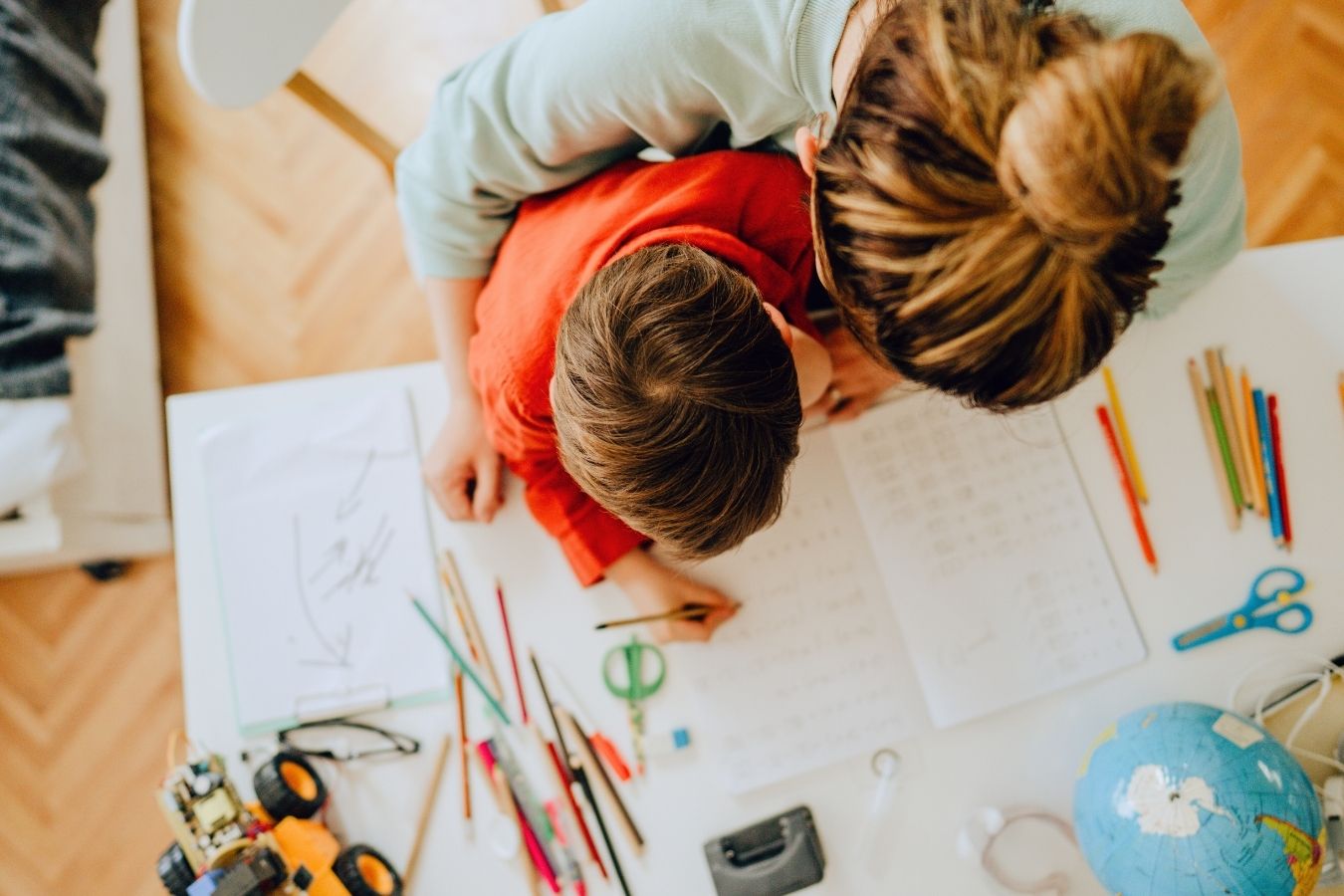Before adopting the Montessori three-period lesson, our homeschooling experience with my 3-year-old child was fraught with challenges. Finding an effective teaching and learning rhythm that suited both my approach and my child’s needs felt daunting, almost leading to a sense of defeat. The traditional methods we tried were too rigid, failing to make learning exciting or engaging for my child. This challenge prompted me to reconsider our approach and seek a method that could enrich our homeschool environment.
Reencountering the three-period lesson, a concept briefly mentioned during a parent-teacher conference years ago, was a pivotal moment. Its simplicity and effectiveness caught my attention, promising a fresh way to weave learning seamlessly into our daily life. This method, focusing on naming, recognition, and recall, appeared to be exactly what I needed to create a more intuitive and engaging learning environment at home.
Introduction to the Three Period Lesson
The three-period Lesson is a cornerstone of Montessori education, designed to introduce and reinforce concepts in a child-friendly, structured way. This effective strategy is used to introduce and reinforce new concepts in a way that is accessible and engaging for children. It consists of three distinct stages:
- The Introduction (Naming): “This is…”
- The Association (Recognition): “Show me…”
- The Recall: “What is this?”
This layout underpins the Montessori approach, simplifying educational objectives into achievable steps and offering a flexible framework for teaching diverse subjects.
-
First Period: The Naming Phase
The first period Imagine is all about naming. Introducing your child new concepts begins, introducing the child to the names of objects, shapes, colors, or any other subject matter. You start by presenting a circle, square, and triangle, clearly stating, “This is a circle,” “This is a square,” and “This is a triangle.” It’s not about bombarding them with information but about sparking curiosity. At home, we used everyday objects, like a circular plate, a square napkin, and a triangular flag, making the learning relevant and tangible.
-
Second Period: The Recognition & Association Phase
Once the introduction is made, it’s time for association. Here, the child begins to associate the names learned in the first period with the objects. It’s an interactive phase, where we engage our child in activities that prompt them to show us the object when its name is mentioned.
I’d ask my child, “Can you show me the circle?” or “Can you show me the spoon?” instead of expecting them to name it. This stage is critical—it’s where the child starts to connect words with objects or concepts. We expanded this by playing simple matching games, like finding objects around the house that matched the shapes we were learning about, reinforcing their understanding through interaction.
-
Third Period: The Recall Phase
The third and final period centers on recall. This phase tests the child’s ability to recall the names of the objects introduced earlier. It’s a significant step, as it demonstrates the child’s ability to internalize and express the knowledge they’ve acquired. A simple way to engage in this phase is by asking, “What is this?” while pointing to an object.
This encourages the child to recall the term independently. It’s a moment of triumph when they can confidently name the shapes. To make this stage more engaging, we turned it into a scavenger hunt, where naming the found objects correctly led to small rewards.
The Impact On Our Homeschooling
Integrating the three-period lesson into our homeschooling routine has been an enlightening experience that has fundamentally changed how we approach education at home. By following the structured yet flexible framework of introducing new concepts through naming, recognition, and recall, we’ve created a learning environment that’s both engaging and effective. This method has allowed us to use everyday objects to make learning tangible, encourage our children to connect words with objects through playful association, and celebrate their achievements as they confidently recall and name what they’ve learned.
Implementing the Three-Period Lesson at Home
The transition to weaving the three-period lesson into our daily homeschooling activities was profound. For parents looking to apply the Montessori three-period lesson at home, the process is straightforward and requires minimal setup.
Start with the resources you have, create a learning-friendly environment, choose materials that spark your child’s interest, and importantly, move at their pace. Here’s a practical guide to making it work:
- Naming: Our journey began with the basics, using everyday items to introduce simple concepts. For example, we used fruits to discuss colors and household objects to explore shapes. This stage was all about igniting curiosity and establishing a foundational understanding.
- Recognition: We then engaged in activities that reinforced these concepts, such as matching games or scavenger hunts. These activities were not only enjoyable but also crucial in deepening their comprehension through active engagement.
- Recall: The final stage focused on consolidation and application. We encouraged our children to name the objects or concepts independently, transforming the process into a playful challenge. This not only boosted their confidence but also demonstrated their mastery of the material.
The Three-Period Lesson’s Impact on Learning and Discovery
Witnessing the world through our children’s eyes as they forge connections and uncover new insights has been an indescribably rewarding journey. The three-period lesson has proven to be more than just an educational strategy for our homeschooling; it has highlighted the value of straightforward, mindful educational practices that respect a child’s natural curiosity and learning ability. This methodology serves as a potent tool for any parent eager to enhance their child’s early educational journey at home, transforming each lesson into a memorable adventure.
This reflection aims not only to share our personal success with the three-period lesson but also to inspire others to consider its potential in enriching their homeschooling experience. The method’s simplicity, combined with its profound impact on learning, underscores the Montessori philosophy’s timeless relevance in fostering curious, independent learners.



